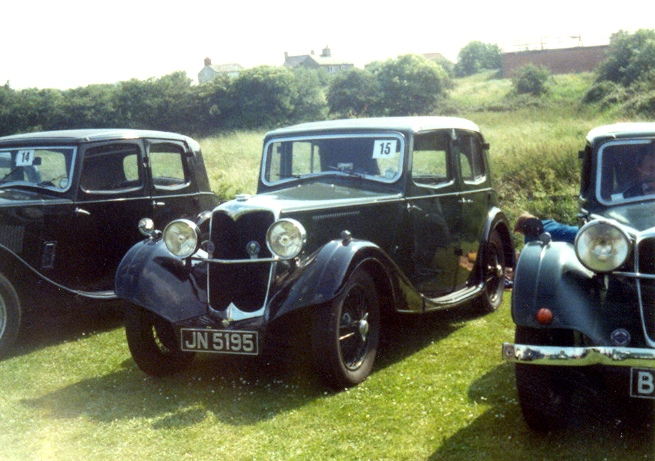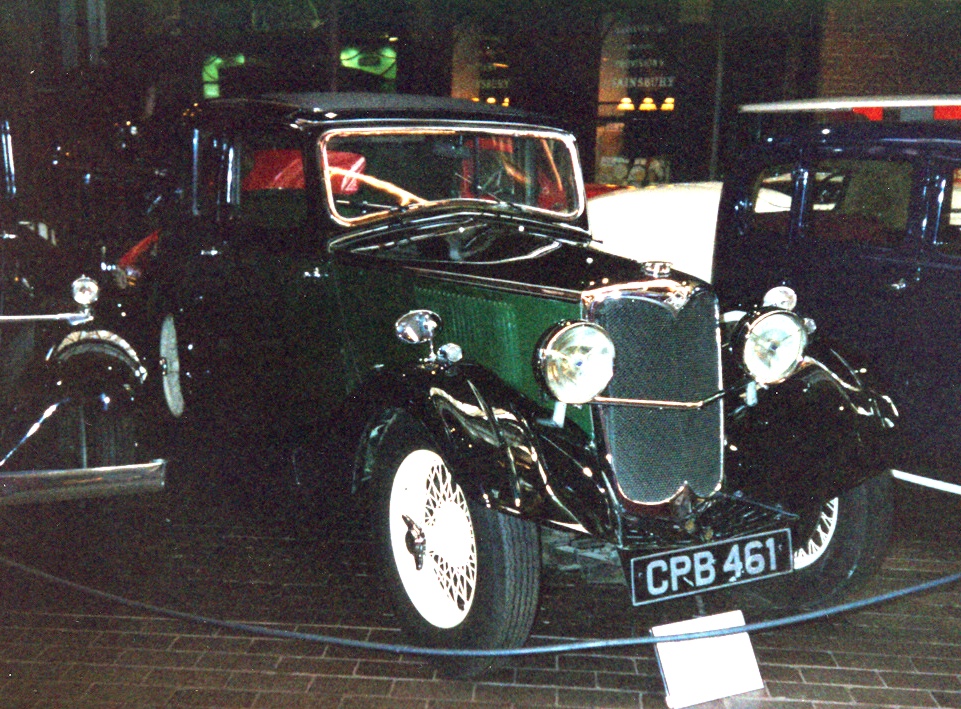Riley Falcon
Chassis: |

| The Falcon name was applied to a variety of saloon models, from the highly innovative original Falcon 9 to the last Briggs-bodied 12/4 models. Whilst those early models barely sold, the less daring later models were strong sellers until replaced by the Adelphi models. |
Riley Archives Project: Riley Falcon
The Falcon was an innovative body at launch, indeed perhaps the most innovative of any Riley design ever produced. It featured a floorpan which descended either side of the transmission tunnel, and on some of the earliest examples, special flaps in the roof which lifted when the doors opened. Designed to ease access to the low slung seats, they were more effective at letting rain in, and soon disappeared. Further innovations were planned on the prototype 9 model, with rear doors incorporating the leading edge of the rear wings, again to aid access, and a 4 speed all-syncromesh gearbox.
The Falcon had a chequered history, coming and going after only a few months in some cases, particularly those early cars which failed to sell, and were discontinued for a rethink. The revised model, launched in late 1934 on the 12/4 chassis, was a more upright saloon, with a sweeping tail loosely resembling the Kestrel in place of the projecting luggage boot of the early models. This car sold very well, albeit possibly helped by the lack of availability of any other 12/4 model for several months. Indeed, the new Falcon sold so well that the design of the new Briggs-bodied range, launched in late 1935, was modelled closely on it. Surprising then that the Falcon 12/4 continued as before, without utilising this new body. It still sold well, despite the close resemblance to the much cheaper Merlin model.
For 1937, however, the only coachbuilt Falcon available was the 15/6, which continued with a body similar to that of the old 12/4 model. The 12/4 itself had finally been turned over to the Briggs Body, replacing the Merlin at the same time, and sales plummeted. Customers can be so fickle!
It is not clear how many of those innovative early Falcons were built, but there are very few survivors. This could as easily be explained by problems with the unique body features forcing cars to be scrapped early as by low sales. The later models sold much better, almost certainly because they were less advanced. Whilst the innovations were good in principle, the execution was not always perfect, and the customers were probably suspicious of these 'new fangled' ideas. Had the materials science and technology been a bit more advanced, so as to keep the water out and reduce the risk of breakages, the novel features of the original Falcon may well have spread and been taken up by other manufacturers. Instead, they slipped quietly into an almost forgotten side street of car development.




